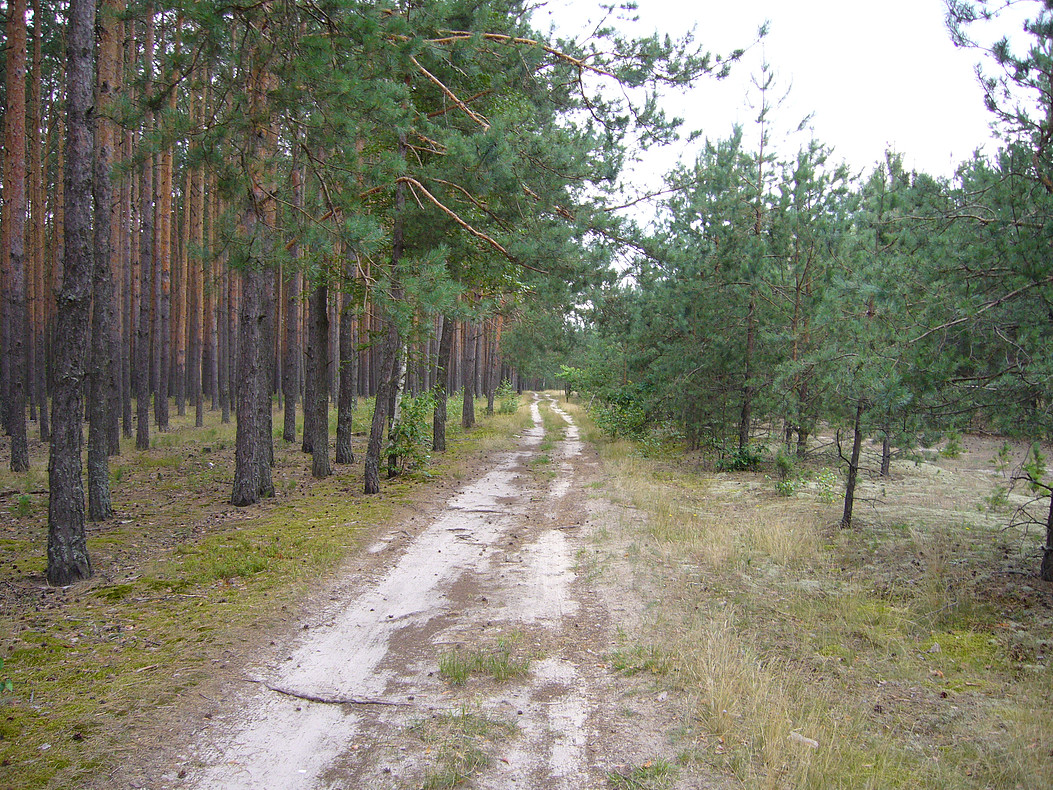

Murder Story of Sarny Jews in the Forest in the Tutowicze Area

On the night of August 25-26, the Ukrainian Auxiliary Police and the German Gendarmerie surrounded the ghetto, and no one was sent out to perform forced labor on the next day; several inmates committed suicide. On the day after that, early in the morning the Ukrainian police and the Gendarmerie herded the ghetto inmates into the square on Barmacka Street, next to the bathhouse near the ghetto gate. By 5 AM, the people had been assembled in this area. Several gendarmes, under the command of Gendarmerie chief Albert Schuhmacher, were registering those who had shown up (i.e., the number of family members) by consulting a list drawn up in advance. It was apparently at this point, according to one testimony, that the town mayor, Ivan Mariniuk (according to another testimony, it was Krekel, the deputy of the Gebietskommissar, who was acting through the Judenrat), calmed the assembled people down, saying that they would be taken to the Poleska camp, where a selection would be carried out; the able-bodied inmates would be sent to work, while the others would be taken back to the ghetto.
Then, at about 7 AM, the people, in groups of 300-500, were taken on foot (elderly and sick individuals were transported in carts), under an armed convoy of Ukrainian policemen and German gendarmes, to the Poleska camp on the northern outskirts of Sarny, which was fenced off with rows of barbed wire. Upon arriving in the camp, the people found out that, on August 25-26, the Ukrainian auxiliary policemen and German Gendarmes had also driven the entire Jewish population of the Sarny County to the camp. These new arrivals (more than 5,000 people) swelled the total Jewish population of the Poleska camp to about 14,000. The inmates were kept in poor conditions, being denied food and water.
The murder operation began at 2 PM on August 27, 1942. The Jews from the town of Rokitno had to go first, being ordered to supply 500 people, who were then led (in groups of 150) to four pits that had been dug, according to a testimony, by members of the Organization Todt. The pits lay 1.5 kilometers northwest of the town of Sarny, at the edge of a young forest near the road leading to the village of Tutowicze. Upon reaching the murder site, the victims – men, women, children, and elderly people – were forced to strip naked and empty their pockets into a specially prepared box. They were then ordered to climb down into the pits in groups. Members of the Security Police and SD squad from Równe forced the victims to lie in rows, face down, inside the pit, whereupon they would shoot them in the head with machine guns. The little children were thrown alive into a separate pit. In this way, several rows of bodies were piled in one mass grave. Afterward, each pit was covered with chlorinated lime and buried under a layer of soil. Among the victims, there were some 100 Roma people, who died protesting that they were not Jews. One testimony indicates that several Jews were kept alive during the massacre, and were then ordered to search for valuables in the victims' clothing. This done, they were annihilated, as well.
Some of the perpetrators of this shooting were men from the German Police Battalion 323 (which was subordinated to Security Division 68). A unit from this battalion, under the command of Unterführer Willi Meyer, killed 1,400 people with machine guns in the course of two days.
The Gebietskommissar of the Sarny County, Kameradschaftsfuhrer Huala, was in charge of this murder operation, which lasted for two days – August 27 and August 28, 1942.


